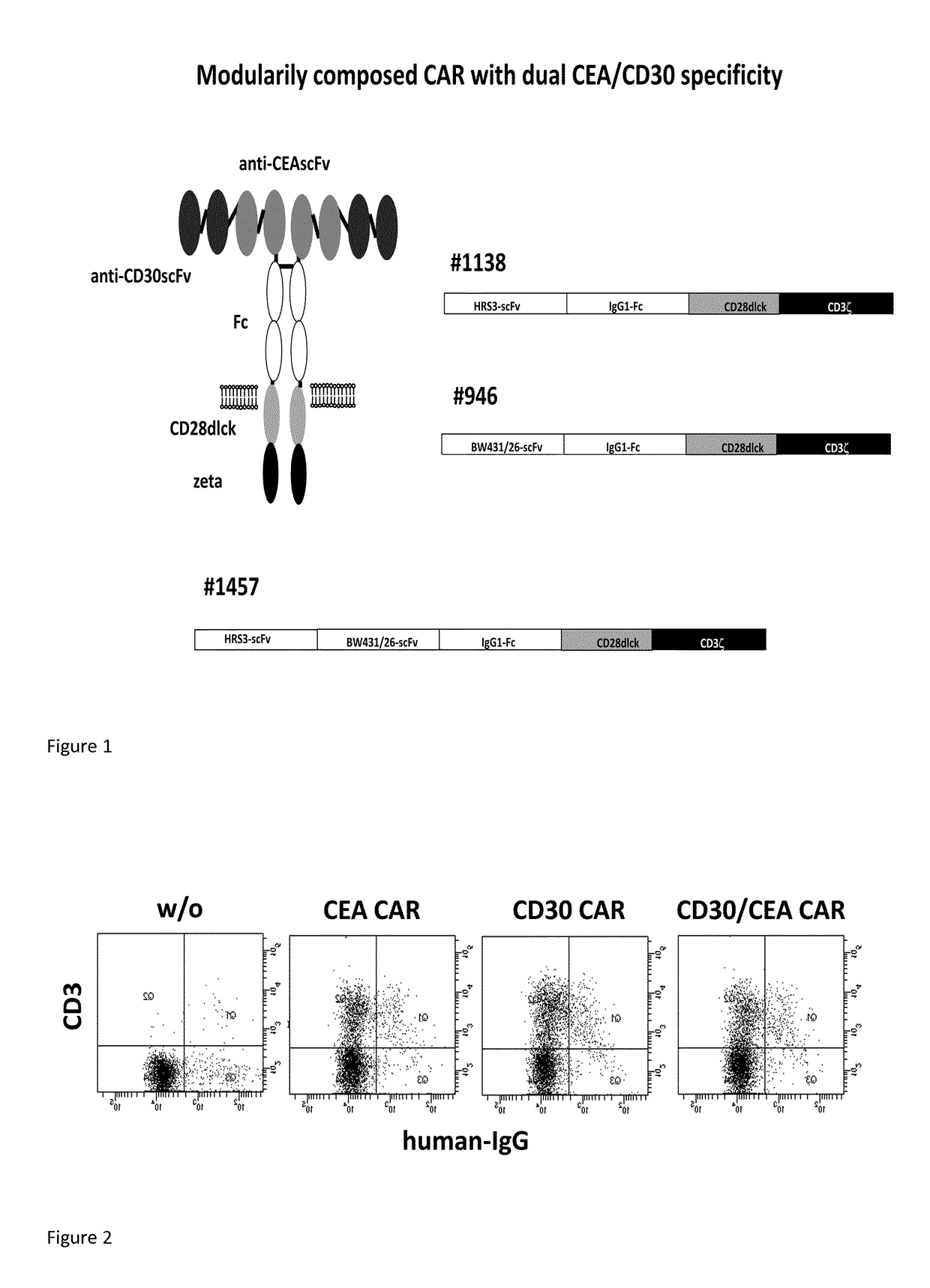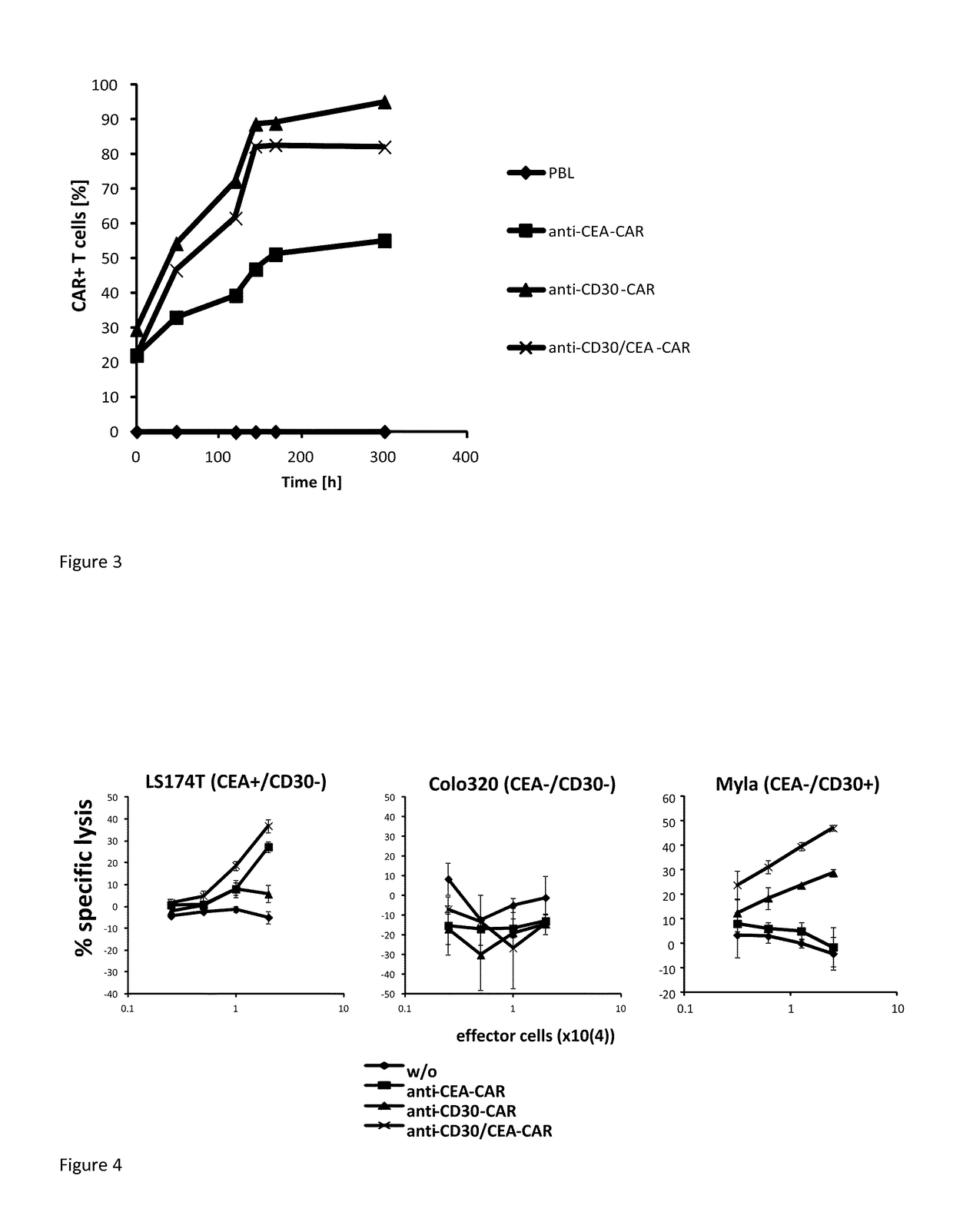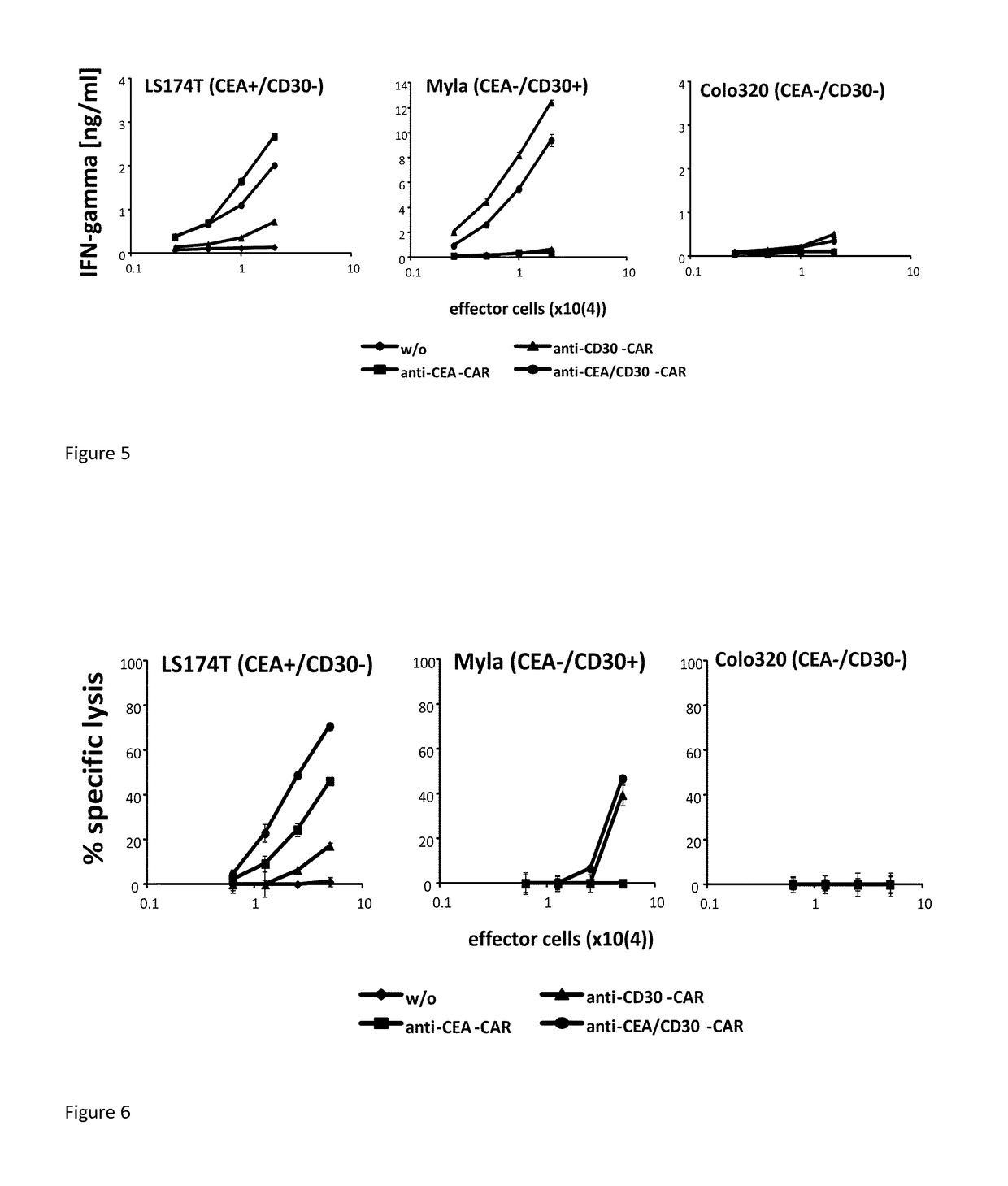Chimeric antigen receptor and its use
a technology t-cell, which is applied in the field can solve the problems of hindering the development of respective therapies, insufficient performance of engineered t-cells in the long-term, and insufficient performance of chimeric antigen receptor (car) modified t-cells for antigen-redirected targeting towards tumor cells, so as to improve the persistence and performance of car t-cells, and the effect of preventing the development o
- Summary
- Abstract
- Description
- Claims
- Application Information
AI Technical Summary
Benefits of technology
Problems solved by technology
Method used
Image
Examples
example 2
Expansion of #1457 CAR Modified T-Cells
[0078]T-cells were engineered with the #1457 CAR or for comparison with the corresponding single CD30 or CEA specific CAR, respectively, and cultivated in presence of IL-2 (400 U / ml). The initial number of CAR+ T-cells was 20-30%. Cells were tested at different time points for CAR expression by flow cytometry. As summarized in FIG. 3, the number of T-cells with the anti-CD30-CAR and the anti-CEA / CD30 CAR #1457 increased up to 90% of T-cells during cultivation whereas the number of anti-CEA CAR T-cells did not exceed 50%.
Conclusion
[0079]Data demonstrate that CAR T-cells with the CD30-binding domain expand superior compared to CAR T-cells with a CEA binding domain. The superior effect is also present when the anti-CD30 binding domain is linked with the anti-CEA binding domain.
example 3
Specific Lysis by CAR #1457 Engineered T-Cells and CAR #1457 Engineered CIK T-Cells Toward CD30-Negative Target Cells
(a) T-Cells
[0080]Human T-cells were engineered to express the CAR #1457, the CEA-specific CAR and the CD30-specific CAR, respectively. The same number of CAR T-cells was co-incubated with tumor cells which express either CEA or CD30 or both. Data presented in FIG. 4 show that the cell line being negative for both CEA and CD30 (Colo320) was not lysed while specific lysis of LS174T cells was observed which is a CEA+ / CD30− cell line. Therein, the anti-CEA / CD30 CAR T-cells demonstrate a higher specific lysis compared to the anti-CEA CAR T-cells.
[0081]The cytolytic activity is accompanied by release of IFN-g, a marker for T-cell activation, as shown in FIG. 5. Anti-CEA / CD30 CAR #1457 T-cells produced IFN-gamma when co-incubated with the CEA+ / CD30− LS174T-cells as well as with the CEA− CD30+ cells. No IFN-gamma was produced upon co-incubation with CEA− CD30− Colo320 cells. ...
example 4
Anti-Tumor Activity of #1457 CAR T-Cells in a Xeno-Graft Mouse Model
[0084]The in vivo activity of anti-CD30 / CEA CAR #1457 T-cells was monitored in the immune deficient Rag− / − common gamma chain− / − mouse. Anti-CEA-CAR and anti-CD30 / CEA CAR #1457 T-cells were engineered as described above and subcutaneously co-injected in a sub-therapeutic dose (2.5×105 CAR T-cells / animal) with CEA+ CD30− C15A3 tumor cells (1×106 cells / animal), that were transfected to express human CEA, into mice. Mice without T-cells and non-modified T-cells were used for control and tumor growth was monitored every 2nd-3rd day. Growth curves (FIG. 7A) and area under curve (FIG. 7B) were determined. Whereas anti-CEA-CAR T-cells produced slightly delay of tumor growth, anti-CD30 / CEA CAR T-cells significantly delayed tumor growth indicating higher anti-CEA activity of the bispecific CAR T-cells #1457 in vivo than T cells with the anti-CEA CAR.
Conclusion:
[0085]Bispecific anti-CD30 / CEA CAR T-cells are more effective in ...
PUM
| Property | Measurement | Unit |
|---|---|---|
| Fraction | aaaaa | aaaaa |
| Nucleic acid sequence | aaaaa | aaaaa |
Abstract
Description
Claims
Application Information
 Login to View More
Login to View More - R&D
- Intellectual Property
- Life Sciences
- Materials
- Tech Scout
- Unparalleled Data Quality
- Higher Quality Content
- 60% Fewer Hallucinations
Browse by: Latest US Patents, China's latest patents, Technical Efficacy Thesaurus, Application Domain, Technology Topic, Popular Technical Reports.
© 2025 PatSnap. All rights reserved.Legal|Privacy policy|Modern Slavery Act Transparency Statement|Sitemap|About US| Contact US: help@patsnap.com



